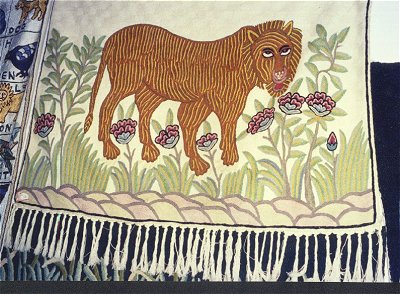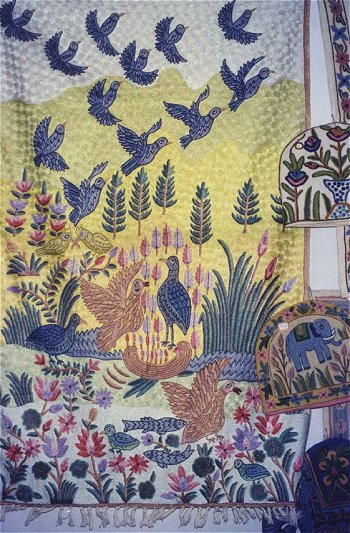The Carpets of India
The deep pile of Indian hand knotted carpets comes in magnificent colors, with designs that are at the same time oriental, exotic and uniquely modern. A trade passed on from father to son, the carpet industry is spread over twenty centers in seven states of India. The sizes and prices are designed to cater to the needs of modern markets all over the world.
The Indian carpet is the true expression of the worker's simple philosophy and his/her sensitive perception of nature. The nature's changing moods are convincingly translated into the carpets. The carpet is also a ramification of set designs composed of myths, legends, romances, and flora. These include embossed designs, range patterns, ancient mural designs, folk paintings from Bihar, Hashamkhani designs from West Bengal, and designs from Kirman, Tabriz, Adrabil and Bukharal. In addition, there is a whole range of Indian designs that have evolved in recent years. The color schemes of the carpets are fantastic and the workmanship, superb. Carpets are woven as finely as 600 knots per square inch or as coarsely as 20 knots to every square inch.
K.L. Kamat/Kamat's Potpourri
Designs of a Hand-knit Woolen Carpet
Important carpet producing centers in India are Mirzapur, Bhadohi, Gopiganj, and Agra in Uttar Pradesh, Amritsar in Punjab, Jaipur and Bikaner in Rajasthan, Gwalior in Madhya Pradesh and Walajapet in Tamil Nadu. The finest of them come from the Kashmir valley. The rough Berber and shaggy carpets are in complementary colors while the Hamadan variety is brightly colored and heavy. The exquisite mulberry silk carpets are light, silky, glossy, and are woven in multiples of shades.
K.L. Kamat/Kamat's Potpourri
Tiger that Loves Flowers!
Design from a hand-woven throw from Kashmir
The Namdah style of handicrafts is allied to the carpet weaving industry of Kashmir. The Namdah is a type of hand-made felt, which is finer and embroidered with cotton thread; it may be oblong, round or oval in shape. Indian carpets are available in different sizes and varying lengths of pile, which may be as low as 1/5 of an inch as in Kashmiri carpets or as high as 7/8 of an inch as in the Indo-Berber variety.
K.L. Kamat/Kamat's Potpourri
Birds of an Himalayan Town
Example of richly detailed embroidery of Kashmir
![]()

